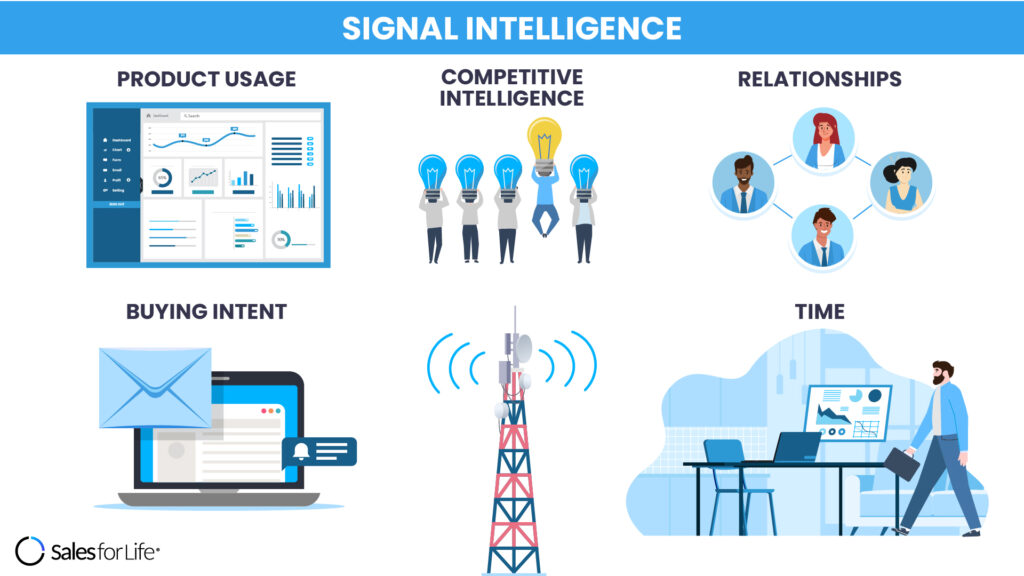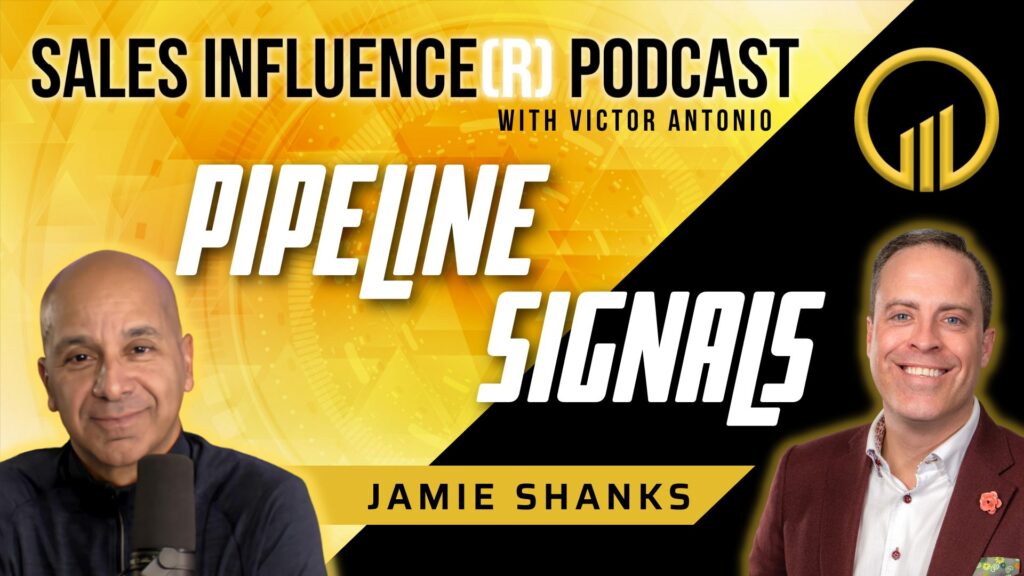For over 9 years, Sales for Life has been training sales professionals across the globe in the art of social selling. It’s a concept that didn’t exist back when the company was established.
And it was our CEO Jamie Shanks who pioneered the concept while looking for customers for his sales consultancy business.
“My little consultancy was making no revenue, I barely had customers, and I would stare at my laptop, trying to figure out, how do I prospect for myself?” he tells top sales trainer Victor Antonio in the podcast Sales Influence – Why People Buy!
That’s how Jamie created the Sphere of Influence sales play, which lets you discover viable leads by leveraging your happy customers’ existing social networks.
“I started using LinkedIn and reverse-engineering and finding these backdoors and these hacks,” Jamie recalls. “People didn’t realize you could use a tool like LinkedIn for the left and the right brain, [for both] research intelligence and engagement.”
Being the first to occupy the social selling space was a learning experience. He quickly found out that, surprisingly, a lot of B2B companies would still insist on traditional sales methods despite the availability of social media platforms.
So he devised a social selling and account-based sales enablement certification that will teach revenue teams how to prospect easily and efficiently—but later found out that sellers usually had too much on their plates to apply what they have learned properly.
“A seller knows inherently that 11% on average of their week needs to be, unfortunately, spent on research. They need to gather intelligence about their key accounts—what’s happening, are competitors going into that account, are there job changes, relationship roadmaps?” says Jamie.
“We’ve been teaching this ad nauseam, but Pareto’s Law kicked in and people just don’t have the time to do it.”
Compelling Events Signals: A Seller’s Secret Weapon
When the pandemic hit and the demand for digital sales training increased, Jamie came up with the idea of building a new company focused on Compelling Events Signals—specific events and insights that distinguish the most promising target accounts from the rest of your total addressable market.
Compelling Events Signals help revenue teams identify areas of opportunity and risk within their account lists, allowing sellers to focus on nurturing the accounts in their pipeline that have a higher probability of producing positive results.
“I told my business partner that I wanted to tackle this idea of building a managed services firm or a business processes service firm, in which we will monitor signal intelligence at a global scale on behalf of our customers and actually deliver this intel directly to the sellers so they can gain back their 11% a week [of research time],” says Jamie.
This was how Sales for Life’s sister company, PipelineSignals.com, was launched in July.
“It’s a full services firm that takes on any group of customers, prospects, or white space that you want to monitor, and we’ll deliver that intelligence to every seller, directly into any sales tool you have so that you can buy back your time and take action right away,” Jamie explains.
How PipelineSignals Helps Sellers Achieve Their Sales Goals
“As a salesperson, it’s really important to understand that people buy from people,” says Jamie.
“[It’s important to monitor Compelling Events Signals because] people are the ultimate leading indicator of the priorities going into a business or leaving a business. When you track human capital migration, that singular change is an indicator. You’ll realize that when that CXO joins a company, they’ll want to shake things up. When the person you’ve been calling leaves, the whole priority in that whole project could leave the door.”
Let’s say a stakeholder in one of your happy customer accounts in Austria left the company last month to join another company headquartered in Brazil. Do you think your sales reps in Europe will tell your reps in South America about it?
Another example: One of your target accounts just hired a new COO. Where did that new person come from? How is that person connected to your customers and competitors?
“It’s intelligence that [your sellers] inherently know they should mind,” says Jamie. You need to gather all this information on a global scale so you can get a better picture of how you can maximize your chances of entering your target accounts.
And that’s exactly what PipelineSignals does.
“We’re giving you a name, a LinkedIn profile, a job title. What happened to them? What was the compelling event? Did they come from a competing customer and are now with a prospect? Did they just get hired? It’s this kind of intelligence,” says Jamie. “We can tell you who’s going into a company, who’ll be promoted into a company, who’ll leave a company, or if an IT department doubles or shrinks in half.”

PipelineSignals’ team of analysts is then responsible for gathering, cross-referencing, and processing all these Compelling Events Signals before delivering them to the client in an easily digestible format. All you’ll need to do is to combine these Compelling Events Signals with your other customer data, such as buying intent and product usage, to know when and how to best approach your target accounts.
Replacing $5/hour tasks with $500/hour value creators
Compelling Events Signals can make prospecting so much easier, boosting pipeline and reducing risk. Jamie knows this better than anyone else, his previous selling woes remedied by sales intelligence.
That’s why he decided to set up PipelineSignals: to pay it forward, helping other sellers achieve their goals and make a greater impact within their revenue team.
“I’m a big believer of exchanging $5/hour tasks for $500/hour value creators,” says Jamie.
“Your sellers need to be doing $500/hr value creators, so we’ll pull the $5/hour tasks out of their hands.”




